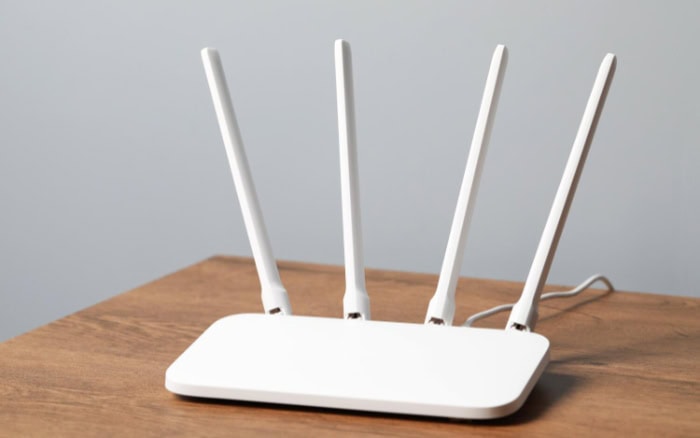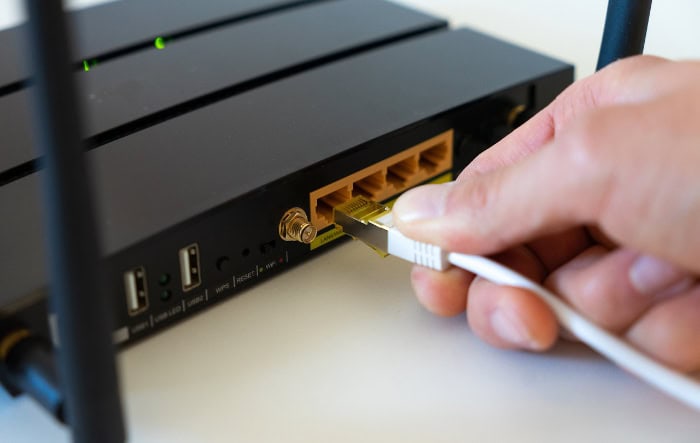Wi-Fi vs. Ethernet: Pros, Cons, and What You Should Use

Choosing between Wi-Fi and Ethernet is a decision that can shape the effectiveness of your internet connection in significant ways. Both options have become staples of modern networking, but their strengths, limitations, and ideal use cases vary.
For those who prioritize flexibility and mobility, Wi-Fi shines as the wireless solution that powers countless smart devices. On the other hand, Ethernet is favored for its unmatched reliability and superior performance, making it an essential option for more demanding setups.
With differences that influence everything from speed and security to scalability, the debate isn’t about which one is universally better—it’s about which fits your needs best.
Performance Comparison
The choice between Wi-Fi and Ethernet is often dictated by the performance requirements of the devices or applications involved. Factors such as internet speed, responsiveness, and connection stability can significantly impact the quality of your online experience.
Speed
Network speed refers to how quickly data can be transferred over a connection and is a critical factor in choosing between Wi-Fi and Ethernet. Modern Wi-Fi standards, such as Wi-Fi 6 and Wi-Fi 7, promise impressive theoretical speeds, with Wi-Fi 7 claiming maximum data rates of up to 30 Gbps under ideal conditions.
While this is competitive with the speeds offered by Gigabit Ethernet, real-world performance tells a different story.
Wi-Fi speeds can fluctuate due to environmental factors, device limitations, and network congestion. Walls, furniture, and other physical obstructions can weaken the signal, reducing speed below the theoretical maximum.
Additionally, shared bandwidth among multiple users on a Wi-Fi network can dilute individual device speeds. Ethernet connections, in contrast, deliver more consistent speeds that closely align with their advertised rates.
Thanks to the direct and dedicated nature of wired connections, Ethernet remains the preferred choice for those requiring sustained high-speed performance, such as for large file transfers or ultra-high-definition media streaming.
Latency
Latency, or the delay between data transmission and reception, plays a pivotal role in applications reliant on real-time responsiveness. Gamers and professionals who frequently engage in video conferencing are especially sensitive to latency, as even small delays can disrupt their experience.
Wi-Fi networks are prone to higher latency due to factors like signal interference and network congestion. Devices competing for bandwidth, or interference from other wireless networks and electronic devices, can increase response times.
Ethernet connections, however, provide lower-latency performance, making them the preferred option for scenarios where milliseconds truly matter. For gamers who rely on precise timing or professionals aiming for seamless communication, Ethernet ensures fewer interruptions and faster responses.
Consistency
The reliability of a network is often tied to its ability to maintain stable performance under varying conditions. Wi-Fi is more vulnerable to fluctuations caused by external factors like distance from the router, interference from neighboring networks, or the presence of physical barriers.
For households with numerous connected devices, such as smartphones, laptops, smart appliances, and gaming consoles, Wi-Fi networks can experience noticeable drops in stability during peak usage.
Ethernet, by design, avoids many of these challenges. Direct cable connections eliminate concerns about signal weakening or interference, offering a stable connection that remains unaffected by changes in the environment.
Large-scale workloads, such as collaborative editing of cloud documents or sustained streaming to multiple devices, benefit from Ethernet’s ability to handle significant data demands without interruptions.
Use Cases and Practical Scenarios

Wi-Fi and Ethernet each serve a wide range of purposes, meeting different needs depending on the environment, the type of devices in use, and the tasks being performed. From family households juggling entertainment and smart home devices to professional workspaces demanding robust bandwidth for cloud-based tasks, choosing the right connectivity type can enhance productivity and functionality.
Home Networks
In homes, connectivity has evolved to support streaming services, smart devices, gaming consoles, and multiple users working or learning online simultaneously. Wi-Fi plays a central role in keeping this dynamic, device-heavy environment running smoothly.
Its wireless nature allows users to move freely throughout the house while staying connected, making it ideal for streaming shows on tablets in the living room or scrolling social media in bed. Smart devices, such as thermostats, speakers, and doorbell cameras, also rely heavily on Wi-Fi due to their wireless design and placement flexibility.
However, homes with heavy data usage may encounter performance bottlenecks on Wi-Fi, particularly when several people are streaming high-definition video, gaming online, or conducting video calls at the same time. In such cases, Ethernet can step in as a reliable solution for bandwidth-intensive tasks.
Hardwiring a gaming console, desktop computer, or smart TV ensures faster speeds and eliminates the risk of interference, which is especially beneficial in multi-user households juggling demanding tasks.
Office and Work Environments
Modern office environments require network solutions that balance speed, reliability, and scalability to accommodate growing digital demands. Remote work, video conferencing, and cloud-based applications often require stable bandwidth to ensure smooth functionality.
Wi-Fi offers the convenience of mobility, allowing employees to connect laptops, tablets, and smartphones as they move between meetings or workstations. Shared access to wireless printers and other network-integrated devices adds further convenience.
Nevertheless, Ethernet remains the preferred choice for stationary workstations that require consistent performance. High-speed wired connections are essential for transferring large files, hosting virtual meetings, or working on collaborative cloud platforms without interruptions.
Additionally, Ethernet’s ability to minimize latency and prevent signal interference creates a more dependable option for professionals managing sensitive tasks or large-scale data processing workflows. A combination of both technologies is common in office spaces, harnessing the flexibility of Wi-Fi while leaning on Ethernet for critical infrastructure.
Device-Specific Needs
The type of device being connected often determines whether Wi-Fi or Ethernet is the more appropriate option. Mobile devices, such as smartphones, tablets, and laptops, are naturally better suited to Wi-Fi because portability is central to their functionality.
Users can move freely without compromising essential connectivity, making Wi-Fi perfect for casual browsing, streaming, and light productivity tasks.
Stationary hardware, however, tends to benefit significantly from Ethernet connections. Desktop computers, gaming consoles, smart TVs, and network-attached storage (NAS) systems are typically positioned in fixed locations, making wired connections straightforward to implement.
These devices often demand higher speeds and greater reliability, making Ethernet an obvious choice. For instance, gamers who use consoles or PCs can eliminate lag and packet loss by opting for a direct wire connection, while anyone working with a NAS will appreciate Ethernet’s ability to handle large file transfers efficiently.
Security and Privacy Considerations

The method of connecting to a network is not just a matter of performance or convenience; it also has significant implications for security and privacy. Wi-Fi and Ethernet approach these issues differently, offering varying levels of protection against data breaches and unauthorized access.
Data Vulnerability
The lack of physical barriers in wireless networks makes them inherently more susceptible to eavesdropping and unauthorized access. Malicious actors can exploit vulnerabilities in Wi-Fi signals using tools to intercept data in transit, potentially gaining access to sensitive information.
Open or improperly secured Wi-Fi networks, especially public ones, are particularly vulnerable to such threats.
Ethernet connections, on the other hand, require physical access to compromise data, adding an extra layer of security. Since Ethernet uses direct, wired links between devices, unauthorized interception is far less likely unless someone gains access to the cables themselves.
For setups involving sensitive or confidential data—such as in financial institutions, corporate offices, or private networks—Ethernet is often preferred due to its reduced exposure to external threats.
Encryption Standards
Encryption plays a critical role in protecting data during transmission. Modern Wi-Fi networks rely on encryption protocols such as WPA3 to ensure data remains secure, even if the wireless signal is intercepted.
WPA3 strengthens protections against brute-force attacks and prevents unauthorized devices from accessing the network. While this encryption is effective, it is still only as strong as the network’s password and configuration.
An improperly secured Wi-Fi network can leave data exposed, emphasizing the importance of strong passwords and regular updates.
Ethernet, however, benefits from its inherent design, which avoids broadcasting data through radio waves. Data transmitted via Ethernet is more insulated from interception and manipulation due to the private nature of wired connections.
While Ethernet does not require encryption to prevent signal interception, it is often paired with other security measures, such as firewalls and secure access controls, to further protect the network.
Network Segmentation
Combining Wi-Fi and Ethernet in a hybrid network setup can provide improved security by segmenting devices based on their sensitivity and usage. For instance, highly sensitive devices such as servers, NAS systems, or workstations can be hardwired via Ethernet, ensuring optimal protection and reliability.
Meanwhile, less sensitive devices such as smart home gadgets or guest-access networks can rely on Wi-Fi without risking the privacy of critical data.
Segmenting networks into smaller, isolated sections helps limit the potential impact of a security breach. Using VLANs (Virtual Local Area Networks) or creating separate Wi-Fi networks can further enhance security, ensuring that unauthorized access to one segment does not compromise the rest of the system.
Hybrid approaches leverage the strengths of both technologies for situations where balancing usability and protection is crucial.
Installation, Cost, and Scalability

Determining whether Wi-Fi or Ethernet is better suited for a particular setup often involves practical considerations like installation, cost, and adaptability over time. Each technology presents unique opportunities and challenges when it comes to deploying the network, managing expenses, and scaling for future needs.
Setup Complexity
The installation process for Wi-Fi tends to be more straightforward compared to Ethernet, making it a popular choice for those seeking convenience. A single router, strategically placed in the home or office, can provide wireless access to multiple devices with minimal effort.
Adjusting the placement of the router, or adding range extenders or mesh systems, can address signal weaknesses in larger spaces without significant physical modifications to the environment.
Ethernet installation requires more planning and effort, especially in environments where devices are spread over a wide area. Running cables through walls or under floors can be labor-intensive, particularly in buildings with limited accessibility for wiring.
Creating an Ethernet-enabled space may also involve installing network switches to accommodate multiple connections. However, once properly set up, Ethernet provides a stable and low-maintenance solution that supports high speeds and reliability.
For newer spaces or renovated areas, pre-wiring for Ethernet during construction can simplify long-term installation challenges.
Cost Analysis
The cost of setting up Wi-Fi or Ethernet depends on the scale and complexity of the network. Wi-Fi networks require a router, and in some cases, additional devices like mesh nodes or signal boosters to enhance coverage.
While modern Wi-Fi routers can be expensive, they typically serve multiple devices and users, making them a cost-effective solution for everyday needs. Maintenance costs for Wi-Fi are generally low, aside from periodic upgrades to keep up with advancements in wireless standards.
Ethernet networks involve an upfront investment in cables, network switches, and potentially higher-end routers with multiple ports. For large-scale setups, the expense can grow significantly when wiring materials and labor are factored in.
However, Ethernet cables and switches tend to have long lifespans, and the reliability of a wired network reduces the need for constant troubleshooting or signal improvement over time. Businesses and tech-heavy households may find the initial investment worthwhile due to the long-term benefits in performance and dependability.
Scalability
Wi-Fi networks excel when it comes to scalability, allowing users to extend coverage as needed without major infrastructure changes. Adding new devices to a Wi-Fi network is as simple as connecting them to the existing router.
For environments with extensive coverage requirements, mesh Wi-Fi systems can be deployed to eliminate dead zones and ensure seamless connectivity across large spaces. This adaptability makes Wi-Fi a practical choice for homes and offices with evolving connectivity demands.
Expanding an Ethernet network involves greater challenges, particularly when accommodating new devices or extending the network to areas without pre-existing cabling. Adding devices often requires additional Ethernet ports, switches, or even rewiring to ensure proper connectivity.
However, once installed, Ethernet provides unparalleled consistency and performance, which can justify the effort in situations requiring robust reliability. For larger institutions like office buildings, Ethernet can be used as the backbone of the network, with Wi-Fi layered on top to enhance convenience for mobile devices.
Conclusion
The decision between Wi-Fi and Ethernet ultimately comes down to balancing performance, convenience, security, and flexibility. Ethernet stands out as the clear choice for those who prioritize speed, reliability, and low latency, particularly in scenarios involving gaming, video conferencing, or other data-intensive activities.
Its physical connection lends it an edge in security, as it avoids the vulnerabilities inherent in wireless signals. However, the complexity and cost of installation, as well as its lack of mobility, may make Ethernet less practical in certain situations.
Wi-Fi, on the other hand, offers unmatched convenience and flexibility. It connects a wide range of devices, supports mobility, and allows for simpler setup and scalability.
Despite its susceptibility to interference, slower speeds under load, and potential security risks, advancements like Wi-Fi 6 and WPA3 encryption have made significant strides in addressing these shortcomings. For casual use, mobile devices, smart home gadgets, and environments with minimal structural barriers, Wi-Fi provides an attractive, hassle-free solution.
Adopting a hybrid approach is often the most practical way to enjoy the benefits of both technologies. By utilizing Ethernet for stationary, high-demand devices like desktops, gaming systems, and servers, and relying on Wi-Fi for mobile devices and everyday convenience, users can optimize their networks for both performance and flexibility.
This combination ensures robust connectivity while accommodating the diverse demands of modern households and workspaces.


